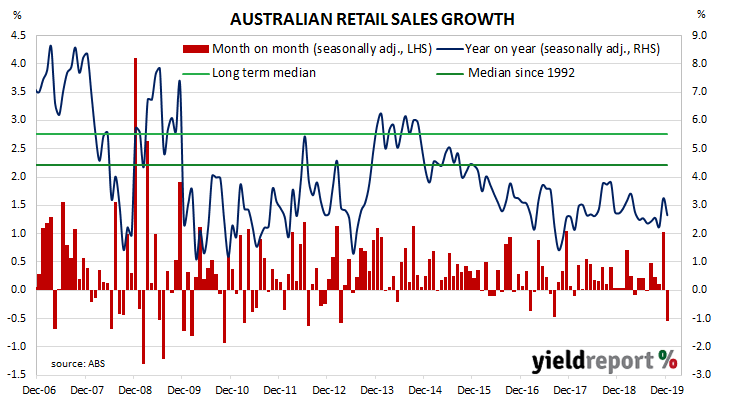Growth figures of domestic retail sales have been declining since 2014 and they reached a low-point in September 2017 when they registered an annual growth rate of just 1.5%. They then began increasing for about a year, only to stabilise at around 3.0% to 3.5% through late 2018 before trending lower through 2019. November’s figures were boosted by Australia’s recent embrace of “Black Friday” sales and economists were expecting some pullback in December as a result.
According to the latest ABS figures, total retail sales fell by 0.5% in December on a seasonally-adjusted basis, a larger decline than the 0.2% fall which had been expected and well below November’s 1.0% increase after it was revised up from 0.9%. On an annual basis, retail sales increased by just 2.7%, as compared to November’s revised figure of 3.3%.
Bell Potter retail analyst Sam Haddad summed the report up. “The soft December data was expected and reflects the pull-forward of sales into November due to the Black Friday/Cyber Monday promotion and a consumer bias towards such promotions.”

US Treasury yields had increased by modest amounts overnight but bond yields in the domestic market moved a little harder. By the end of the day, the 3-year ACGB yield had gained 5bps to 0.76%, the 10-year yield had increased by 6bps to 1.11% while the 20-year yield finished 7bps higher at 1.51%.
Prices of cash futures contracts moved to soften expectations of a rate cut in the first half of 2020, although the perceived likelihood of a July cut still remained high. March contracts implied a 9% chance of a 25bps rate cut, down from the previous day’s 13% while April contracts implied a 26% chance of another cut, down from 42%. May contracts implied a 41% chance but July contracts still implied an 82% likelihood.

